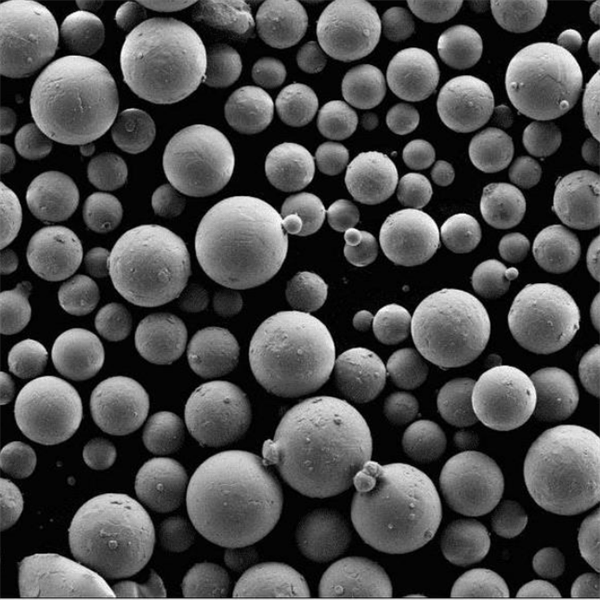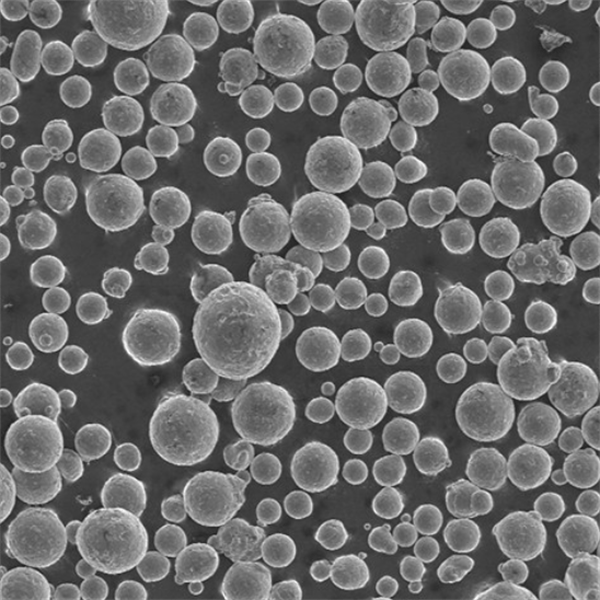Gas Atomizer Manufacturer
Table of Contents
Overview
The manufacturing world is abuzz with innovations, and gas atomization is at the forefront, especially in the production of metal powders. But what exactly does a gas atomizer manufacturer do? Simply put, these manufacturers specialize in the creation of metal powders using gas atomization—a process where molten metal is sprayed with high-pressure gas to produce fine particles. This method is critical for industries requiring high-quality, uniform metal powders. In this guide, we’ll dive deep into the specifics of gas atomizers, explore various metal powder models, and shed light on their applications, specifications, advantages, and disadvantages.
Understanding Gas Atomization
Gas atomization is a fascinating process, but it can sound like jargon to the uninitiated. Imagine a jet of molten metal meeting a high-velocity gas stream. The metal, unable to resist the force, disintegrates into tiny droplets. As these droplets cool, they solidify into fine metal powders. These powders are pivotal in various applications, from additive manufacturing to aerospace components.

Types of Metal Powders Produced by Gas Atomizers
Metal Powder Models and Descriptions
| Model | Composition | Properties | Applications |
|---|---|---|---|
| AlSi10Mg | Aluminum, Silicon, Magnesium | High strength, good thermal properties | Aerospace, automotive |
| 316L Stainless Steel | Iron, Chromium, Nickel | Corrosion-resistant, high ductility | Medical devices, marine applications |
| Ti-6Al-4V | Titanium, Aluminum, Vanadium | High strength-to-weight ratio, biocompatible | Biomedical implants, aerospace |
| Inconel 718 | Nickel, Chromium, Iron | Heat and corrosion-resistant, high tensile strength | Gas turbines, nuclear reactors |
| Copper 99.9% | Pure Copper | Excellent electrical and thermal conductivity | Electrical components, heat exchangers |
| CoCrMo | Cobalt, Chromium, Molybdenum | High wear resistance, biocompatible | Dental implants, orthopedic implants |
| FeSiAl | Iron, Silicon, Aluminum | Soft magnetic properties, high permeability | Electrical transformers, inductors |
| NiCrMo | Nickel, Chromium, Molybdenum | High corrosion resistance, maintains strength at high temperatures | Chemical processing, oil and gas industry |
| Aluminum 6061 | Aluminum, Magnesium, Silicon | Lightweight, high strength, good corrosion resistance | Structural components, marine fittings |
| Tool Steel D2 | Iron, Chromium, Carbon | High hardness, wear resistance | Cutting tools, dies, molds |
Applications of Gas Atomizer Manufacturers
Diverse Uses of Metal Powders
Metal powders produced by gas atomizers find their way into a myriad of industries. Here’s a closer look at some key applications:
| Industry | Application |
|---|---|
| Aerospace | Jet engine components, structural parts |
| Automotive | Lightweight parts, engine components |
| Medical | Implants, prosthetics, surgical tools |
| Electronics | Conductive inks, electronic components |
| Oil and Gas | Drilling tools, valves, and pumps |
| Additive Manufacturing | 3D printing of complex structures, rapid prototyping |
| Chemical Processing | High-performance filters, corrosion-resistant components |
| Defense | Ammunition, armor, and other military hardware |
Detailed Specifications and Standards
Key Specifications of Metal Powders
When evaluating metal powders, certain specifications and standards come into play. Here are some important parameters to consider:
| Property | Specification | Standard |
|---|---|---|
| Particle Size | 10-150 microns | ASTM B214 |
| Purity | ≥99.9% | ASTM E1621 |
| Flow Rate | 25-30 s/50g | ISO 4490 |
| Density | 3.2-8.9 g/cm³ | ASTM B962 |
| Oxygen Content | ≤0.1% | ASTM E1409 |
| Surface Area | 0.1-0.5 m²/g | BET Method |
Grades and Sizes
| Material | Grade | Size Range |
|---|---|---|
| AlSi10Mg | Grade A | 15-45 microns |
| 316L Stainless Steel | Grade B | 20-63 microns |
| Ti-6Al-4V | Grade 5 | 10-45 microns |
| Inconel 718 | Grade 2 | 15-53 microns |
| Copper 99.9% | Grade C | 25-75 microns |
| CoCrMo | Grade 1 | 20-45 microns |
| FeSiAl | Grade D | 30-60 microns |
| NiCrMo | Grade E | 15-63 microns |
| Aluminum 6061 | Grade F | 20-50 microns |
| Tool Steel D2 | Grade G | 10-40 microns |
Advantages of Gas Atomization
Why Choose Gas Atomization?
Gas atomization offers numerous advantages over other powder production methods. Let’s explore these benefits:
- High Purity: Gas atomization can produce highly pure powders, crucial for applications where contamination is a major concern.
- Uniform Particle Size: The process allows for tight control over particle size distribution, ensuring consistency in end-use applications.
- Versatility: A wide range of metals and alloys can be atomized, providing flexibility to manufacturers.
- Improved Properties: Powders produced through gas atomization often exhibit superior physical and chemical properties.
- Scalability: The process can be scaled up to produce large quantities of powder, meeting industrial demands efficiently.
Disadvantages of Gas Atomization
Potential Drawbacks
While gas atomization is advantageous, it does come with some limitations:
- Cost: The process can be expensive due to the equipment and energy required.
- Complexity: Operating gas atomizers requires technical expertise and stringent process control.
- Equipment Maintenance: The high temperatures and pressures involved can lead to wear and tear on the equipment, necessitating regular maintenance.
- Material Limitations: Not all metals and alloys are suitable for gas atomization, potentially limiting its applications.
Supplier and Pricing Details
Leading Gas Atomizer Manufacturers and Prices
Here’s a look at some of the top gas atomizer manufacturers and the pricing details for their products:
| Manufacturer | Product | Price Range |
|---|---|---|
| Höganäs AB | Metal Powders | $50 – $200/kg |
| Sandvik Osprey | Gas Atomized Powders | $70 – $250/kg |
| GKN Hoeganaes | Specialty Powders | $60 – $220/kg |
| Carpenter Technology | High-Performance Powders | $80 – $300/kg |
| ATI Powder Metals | Titanium Powders | $100 – $350/kg |
| Kennametal Stellite | Cobalt-Based Powders | $90 – $280/kg |
| Eramet Group | Nickel Powders | $85 – $270/kg |
| AMETEK Specialty Metal Products | Tool Steel Powders | $70 – $240/kg |
| Powder Alloy Corporation | Aerospace Powders | $95 – $310/kg |
| LPW Technology | Additive Manufacturing Powders | $75 – $260/kg |
Comparing Gas Atomization with Other Methods
Pros and Cons of Gas Atomization vs. Other Methods
| Process | Pros | Cons |
|---|---|---|
| Gas Atomization | High purity, uniform particle size, versatility | High cost, complex operation |
| Water Atomization | Lower cost, simpler equipment | Less control over particle size, impurities |
| Centrifugal Atomization | High production rates, good particle uniformity | Limited to certain metals, high initial cost |
| Plasma Atomization | Extremely fine powders, high purity | Very expensive, specialized equipment needed |
| Mechanical Milling | Cost-effective, simple operation | Poor particle size control, contamination risk |

FAQs
1. What types of metals can be gas atomized?
Gas atomization can be used with a wide variety of metals and alloys, including:
- Stainless steels
- Aluminum
- Titanium
- Superalloys
- Nickel alloys
- Tool steels
2. What are the benefits of using gas-atomized powders?
Gas-atomized powders offer several advantages, including:
- Fine and uniform particle size: This allows for better control over the final properties of the manufactured part.
- Spherical shape: Spherical particles flow more easily and pack more densely, leading to improved performance in additive manufacturing and other applications.
- High purity: Gas atomization minimizes contamination from the environment.
3. How can I find a gas atomizer manufacturer?
Many companies specialize in gas atomization. Searching online for “gas atomization manufacturers” or contacting industry organizations can help you find potential suppliers.
4. What factors should I consider when choosing a gas atomizer manufacturer?
Here are some key factors to consider:
- Reputation and experience: Look for a manufacturer with a proven track record of producing high-quality powders.
- Material capabilities: Ensure the manufacturer can produce powders from the specific metal or alloy you need.
- Particle size and distribution: Specify the desired particle size and distribution for your application.
- Quality control procedures: Inquire about the manufacturer’s quality control processes to ensure consistent powder quality.
- Pricing and lead times: Get quotes from several manufacturers to compare pricing and production timelines.
5. What are some applications of gas-atomized powders?
Gas-atomized powders are used in various industries, including:
- Additive manufacturing (3D printing): Powders are a critical material for many 3D printing processes.
- Powder metallurgy: Powders are used to create complex shapes and components by pressing and sintering.
- Thermal spraying: Powders are used to coat surfaces with a layer of metal for improved wear resistance, corrosion resistance, or other properties.
Share On
MET3DP Technology Co., LTD is a leading provider of additive manufacturing solutions headquartered in Qingdao, China. Our company specializes in 3D printing equipment and high-performance metal powders for industrial applications.
Inquiry to get best price and customized Solution for your business!
Related Articles
About Met3DP
Recent Update
Our Product
CONTACT US
Any questions? Send us message now! We’ll serve your request with a whole team after receiving your message.

Metal Powders for 3D Printing and Additive Manufacturing
COMPANY
PRODUCT
cONTACT INFO
- Qingdao City, Shandong, China
- [email protected]
- [email protected]
- +86 19116340731


















